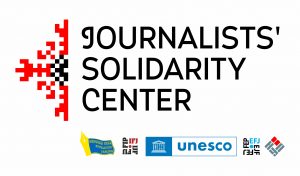How different countries are looking for ways to respond to the challenges posed by the development of digital platforms.
Definition
Self-regulation in the media is a system in which industry participants unite and independently develop and implement rules or codes of conduct to regulate their work, as well as monitor their implementation. The goal of such a system is to ensure the ethics, transparency, and responsibility of journalists and the media without state intervention.
An example is independent press councils or journalistic ethics commissions, which adopt ethical rules for newsrooms and are engaged in resolving conflicts between the media and the audience.
Co-regulation in the media is an approach in which rules and standards are formed in cooperation between state authorities and the industry. State intervention is possible if the goals of co-regulation are not achieved. The state ensures the legitimacy of decisions and their implementation through legislation. At the same time, the private sector is given flexibility in defining and applying norms.
The difference between these approaches lies in the level of state control: self-regulation is voluntary and completely independent of the state, while co-regulation involves cooperation with a regulator or government, and the decision of the co-regulatory body is binding on the entire industry.
The combination of the two models allows for maintaining the quality of content and protecting the rights of information consumers.

Which areas and types of media are subject to co-regulation, and which are subject to self-regulation
We highlight several areas where co-regulation is introduced:
- protection of minors (in audiovisual services and computer games);
- advertising;
- film production;
- video-sharing platforms.
From the analysis of practice, it follows that co-regulation in the media is a broad concept, including rules for marketing campaigns, games, outdoor advertising, or other content that is not journalistic and not related to traditional media.
The powers of co-regulatory bodies do not extend to journalistic content. The generally accepted approach is when the assessment of the compliance of journalistic materials with the code of ethics is provided by a self-regulatory body.
Exceptions are media products that affect the interests of consumers in the area where co-regulation is introduced: for example, programs that may affect minors. These programs may fall under the monitoring of the co-regulatory system, but in this case, the media product is assessed according to formal criteria: age rating, viewing time or technical restrictions for minors, and the presence of labeling if necessary. The co-regulatory body does not provide conclusions on the ethical or unethical nature of the material or compliance with journalistic standards; this can only be done by the self-regulatory body.
The vast majority of examples of co-regulation in European countries concern audiovisual services, such as traditional broadcasters, as well as film production, online cinemas, etc. In these areas, there is enough experience, examples, and expert publications.
There is much less information about co-regulation in online media, about the responsibility of platforms and digital services. Printed publications are overwhelmingly not participants in co-regulation systems and are subject only to self-regulation (the exception is Hungary, where the publishers’ association is part of the co-regulatory body).
Where is the line between self-regulation and co-regulation?
There is no typical European model of demarcation between co- and self-regulation. As noted above, the boundaries of self-regulation and co-regulation are determined by the scope of monitoring and the type of media. Context matters: practices that function well in some political environments may even hinder the achievement of regulatory goals in others.
Between “pure” self-regulation and co-regulation, there is a transitional model called “regulated” or “legislative” self-regulation. The state empowers the industry to regulate a certain area and participates in the development of rules but does not influence the process. Self-regulatory bodies play a leading role in the system. At the same time, the state’s involvement in some way is not excluded, and this makes the scheme close to co-regulation.
The “regulated self-regulation” model is characteristic of countries with strong traditions of self-regulation in the media industry (Germany, Belgium, and the Netherlands). Self-regulatory bodies participate in the system and cooperate with state bodies to achieve the goals of co-regulation.
For example, in Germany there are many organizations and schemes that are part of the “regulated self-regulation” system: the German Advertising Standards Council (Deutscher Werberat), the Voluntary Self-Regulation Scheme of the Film Industry (Freiwillige Selbstkontrolle der Filmwirtschaft), the Entertainment Content Rating (FSK), the Entertainment Software Rating Board (Unterhaltungssoftware-Selbstkontrolle), the Voluntary Self-Regulation Scheme of the Television Industry (Freiwillige Selbstkontrolle Fernsehen) and the Voluntary Self-Regulation Scheme of Multimedia Service Providers (Freiwillige Selbstkontrolle Multimedia-Diensteanbieter).
In the classic co-regulation variant, the state not only instructs the industry to develop rules but also approves them and uses the levers to enforce them. The fear of sanctions from the state motivates the participants in the system to comply with the established rules.
An example of a self-regulatory body participating in a co-regulation system is the Kijkwijzer system implemented by the Netherlands Institute for the Classification of Audiovisual Media (NICAM), to which more than 2,200 companies and organizations have joined, either through their industry organizations or directly. NICAM acts as a self-regulatory body in a co-regulation system for the protection of minors.
In addition to audiovisual content ratings, Kijkwijzer informs audiences about game ratings and the use of parental controls on television and video-on-demand in games and social media.
Another example is the Freiwillige Selbstkontrolle der Filmwirtschaft (FSK) in Germany, a self-regulatory body set up after 1945 to replace military censorship with a review procedure. This institution has now evolved into a means of review by independent experts organized by the industry but with the participation of the state. Public sector representatives always have a majority in the committees – four to three.
The Commission for the Protection of Minors in the Media (Kommission für Jugendmedienschutz) in Germany is described by experts as “regulated self-regulation” because the state defines and enforces legal norms and issues certificates to voluntary self-regulatory bodies. The state can also overturn a self-regulatory body’s decision if it considers that it has exceeded its powers.
In France, under the law on the protection of minors, online content monitoring is carried out on a joint initiative of the French government and L’Association des Fournisseurs d’Accès et de Services Internet (Association of Internet Access Service Providers). However, the government is not involved in ensuring compliance with the code of conduct.
In Hungary, the state regulator concludes an administrative agreement with the self-regulatory bodies, which are united in a co-regulatory body (currently consisting of four associations). The scope of such a structure extends to the consideration of complaints against service providers, the settlement of disputes between media outlets, and the supervision of the activities of service providers. The national regulator supervises the work of the co-regulatory body, reviews its decisions, and, as a last resort, may terminate the administrative agreement.
At the EU and national level, there are certain self-regulatory or co-regulatory systems for the responsible marketing of alcoholic beverages. There are also adopted regulations and nutritional recommendations to reduce the exposure of children to audiovisual commercial advertising of foods and beverages high in trans fats, salt or sugar.
Conclusions
The analysis of European practice shows the diversity of co- and self-regulation models in different countries. This is explained by different experiences and circumstances. A common practice is the key participation of self-regulatory bodies in the co-regulatory system.
Cooperation between self-regulatory bodies and co-regulatory bodies is always based on a specific goal: for example, the protection of minors. Institutions agree on joint participation in achieving goals and on the limits of responsibility.
Journalistic content is overwhelmingly a self-regulatory area.
All countries are looking for ways to respond to the challenges that have arisen with the development of digital platforms. The approach based on media types seems outdated in the era of convergent editorial offices. There are no ready-made answers about the distribution of roles of self-regulation or co-regulation in this area, but the EU institutions demonstrate their readiness for mandatory consultations with a wide range of stakeholders and transparent dialogue.
This article is produced by the Commission on Journalism Ethics (CJE) with the support of the European Federation of Journalists (EFJ) as part of the project’ Media in Emergencies’. Funded by the European Union. Views and opinions expressed are, however, those of the author(s) only and do not necessarily reflect those of the European Union or the European Education and Culture Executive Agency (EACEA). Neither the European Union nor EACEA can be held responsible for them.
Lina Kushch, NUJU First Secretary
For Detector Media

 THE NATIONAL UNION OF
JOURNALISTS OF UKRAINE
THE NATIONAL UNION OF
JOURNALISTS OF UKRAINE
















Discussion about this post